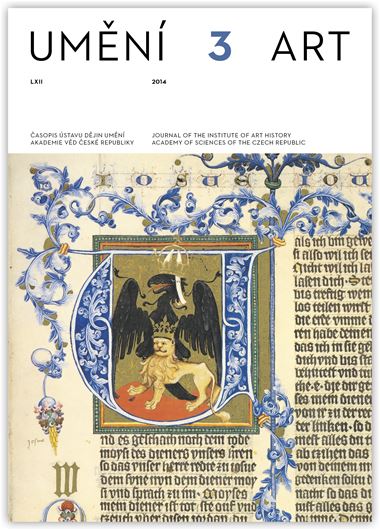Milada Studničková
Gens Fera. The Wild Men in the System of Border Decoration of the Bible of Wenceslas IV
The wild man in the borders of the Bible of Wenceslas IV is usually thought to have been derived from the tradition of the satyrs of antiquity and interpreted as a symbol of unbridled natural forces and sexual desire, which has its specific place in the world of courtly love. The study shows that the mediaeval homo sylvestris, homo pilosus, or homo ferus was to a large extent the product of theological reflection, based on biblical exegesis. The meaning of these beings in the Wenceslas Bible is investigated in connection with the texts that they accompany, and in interaction with other figures in the borders of the manuscript (the king, the female bathhouse attendant, the torse or knotted fabric, the letters ‘e’ and ‘w’, and the heraldic motifs). The analysis shows that some of the representations of wild men are related to references to hair or beards, which grow out of the body and thus symbolise carnality, mortality, and sinfulness. A further group of meanings is related to wildness in the figurative sense: to the sinful people and to God’s command of cleansing and obedience. God ‘tames the wild people’ by laws and leads it to salvation. The wild people, whom God in his mercy forgives its unfaithfulness, is at the same time the people of the King of the Romans and of Bohemia, which has rebelled against its ruler. The scenes in the margins are ‘pictorial glosses’ which connect to current events biblical verses relating to various aspects of government and salvation. They present Wenceslas IV as the lawful King of the Romans and of Bohemia by the will of God, the heir of Charles IV. The emphasis on the ‘unfaithfulness of the people’ and on the claim to the crown of the Roman Emperor correspond to the political situation between 1394 and 1402, when Wenceslas IV was preparing to travel to Rome to be crowned, an attempt that was definitively thwarted by his second captivity. The fact that the images are difficult to understand and have various meanings is deliberate. It is part of the elite ‘secret knowledge’ which helped form the charisma and power of the monarch. Paradoxically, the mysterious scenes later contributed to the creation of the image of Wenceslas IV as an immoral and impious king.
Full-text in the Digital Library of the Czech Academy of Sciences:
https://kramerius.lib.cas.cz/uuid/uuid:ae46eb62-670a-4a79-b628-b175dd068429
< back

